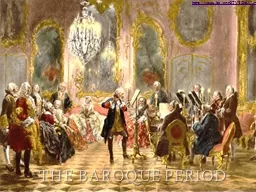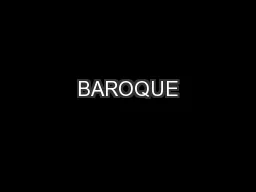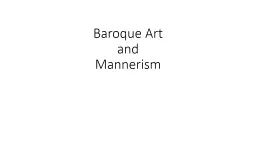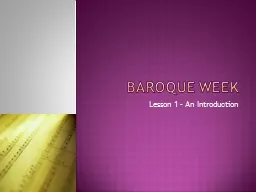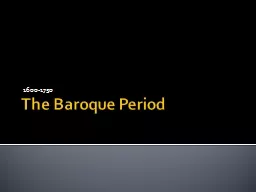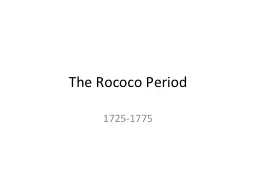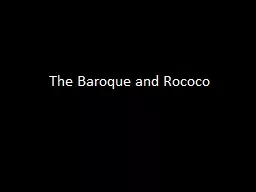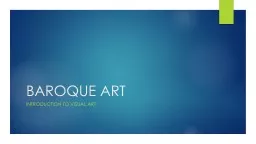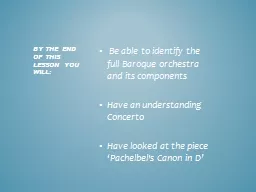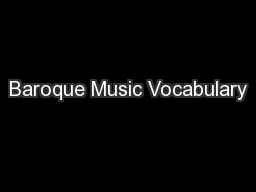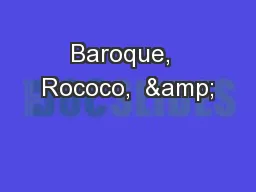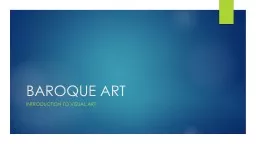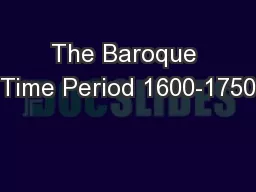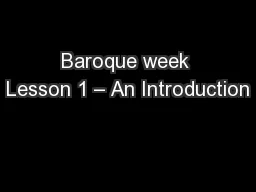PPT-The Baroque Period https://
Author : stefany-barnette | Published Date : 2018-10-31
youtubecnn3TVBDtcAt48m20s The Classical Music Periods There were no such things as musical periods when the music was written and performed in the last 1500 years
Presentation Embed Code
Download Presentation
Download Presentation The PPT/PDF document "The Baroque Period https://" is the property of its rightful owner. Permission is granted to download and print the materials on this website for personal, non-commercial use only, and to display it on your personal computer provided you do not modify the materials and that you retain all copyright notices contained in the materials. By downloading content from our website, you accept the terms of this agreement.
The Baroque Period https://: Transcript
Download Rules Of Document
"The Baroque Period https://"The content belongs to its owner. You may download and print it for personal use, without modification, and keep all copyright notices. By downloading, you agree to these terms.
Related Documents

